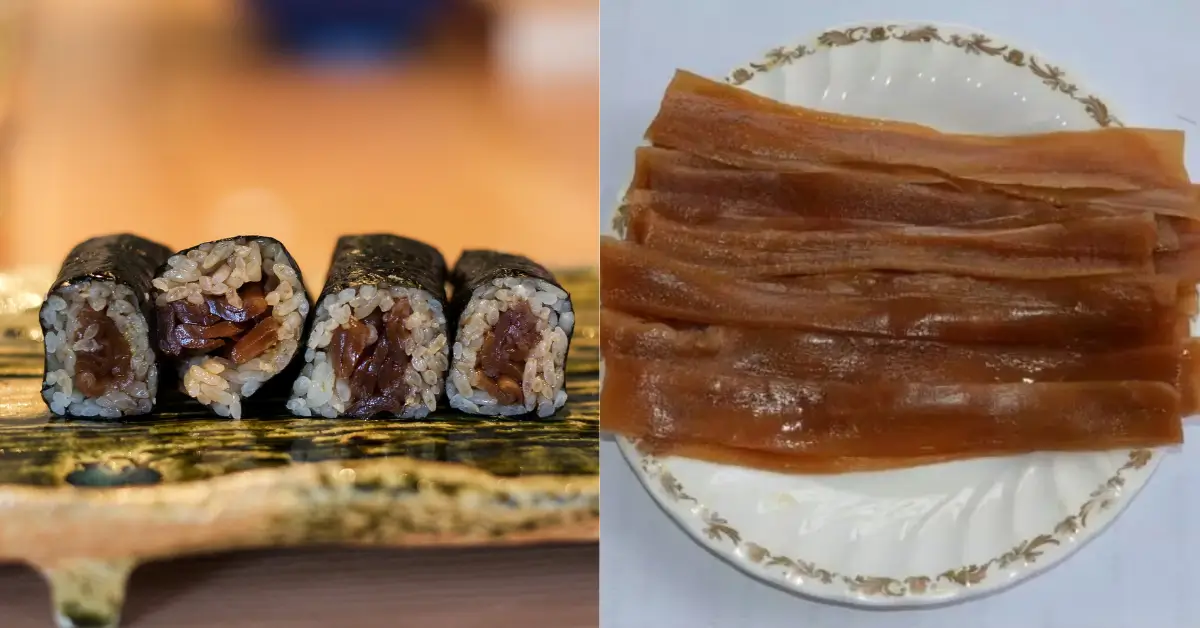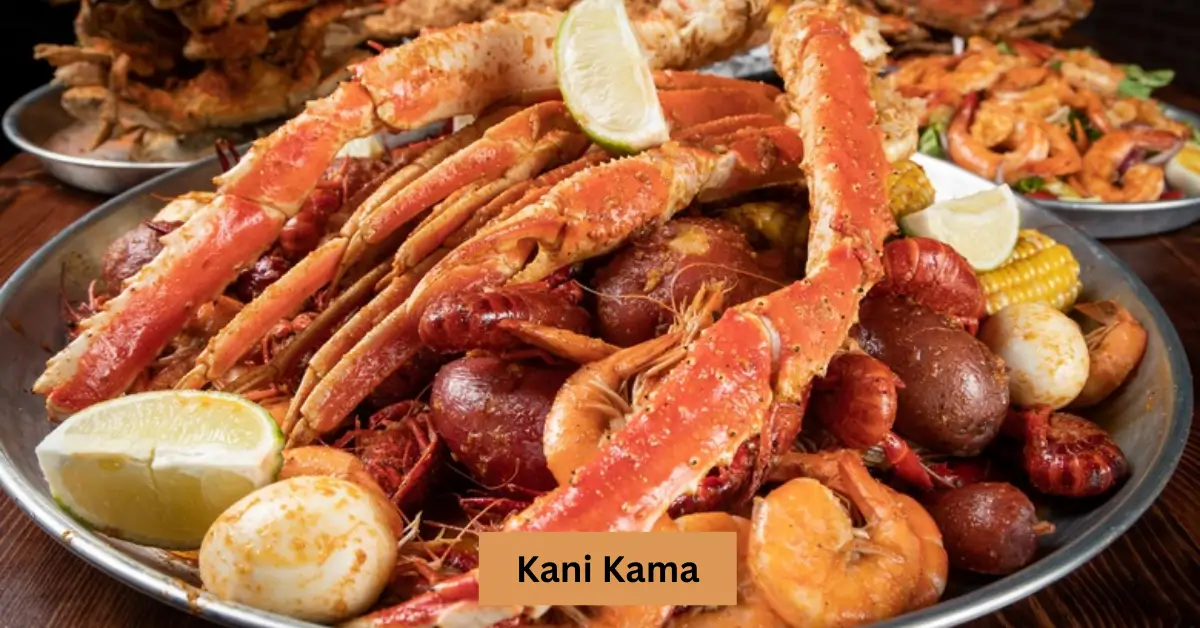Kampyo, a staple of traditional Japanese cuisine, transforms the humble calabash gourd into an ingredient celebrated for its versatility and nutritional benefits. Used in sushi, simmered dishes, and soups, this unique ingredient is revered for its mild sweetness, chewy texture, and cultural significance. Whether you’re a foodie exploring Japanese flavors or someone keen on healthier eating, kampyo offers an exciting glimpse into the artistry of Japanese cooking.
This article explores kampyo in depth, from its origins to preparation, health benefits, and its role in Japanese cuisine. Discover why this dried gourd has stood the test of time and learn how to incorporate it into your culinary repertoire.
What is Kampyo?
Kampyo refers to dried strips of calabash gourd (Lagenaria siceraria), a plant cultivated for centuries in Japan. These thin, ribbon-like shavings are created by slicing the gourd into long strips and drying them under the sun. Kampyo is prized for its ability to absorb flavors, making it a perfect ingredient for diverse dishes.
This traditional ingredient plays a vital role in Japanese cooking, often featured in sushi rolls, soups, and simmered dishes. Kampyo’s neutral flavor makes it versatile, while its historical ties to Japanese culture and cuisine elevate its status as a culinary treasure.
How Kampyo is Made: From Gourd to Plate
The production of kampyo begins with the calabash gourd, a plant known for its firm texture and subtle flavor. The gourd is peeled and sliced into thin ribbons using specialized tools, ensuring uniformity. These strips are then sun-dried, preserving their shelf life while enhancing their ability to absorb seasonings.
This process transforms a fresh gourd into a durable and versatile ingredient. Once dried, kampyo can be stored for extended periods, ready to be rehydrated and cooked into flavorful dishes. The craftsmanship involved in preparing kampyo reflects the dedication to quality ingrained in Japanese food culture.
Culinary Uses of Kampyo in Japanese Cuisine
Kampyo’s versatility shines in its many uses across Japanese dishes. Its mild, slightly sweet flavor and chewy texture make it a favorite for sushi rolls, particularly in futomaki, where it complements other ingredients like egg, cucumber, and shiitake mushrooms.
Beyond sushi, kampyo is often simmered with soy sauce, mirin, and sugar to create a flavorful side dish or topping for rice bowls. It also enhances soups and stews by adding texture and absorbing the dish’s rich flavors. Its adaptability makes it a staple in kitchens worldwide.
Preparing Kampyo: Step-by-Step Guide
- Rehydration: Soak dried kampyo strips in water for 30–60 minutes to soften them.
- Rinse and Salt: Rub the strips with salt to remove any bitterness, then rinse thoroughly.
- Boil: Boil the kampyo in water for 10–15 minutes to further soften them.
- Seasoning: Simmer the boiled strips in a mixture of soy sauce, sugar, and mirin until they absorb the flavors.
This preparation process ensures the kampyo is flavorful and ready for use in a variety of dishes.
Kampyo in Sushi: A Traditional Ingredient
In the world of sushi, kampyo holds a special place as a classic filling for futomaki and other rolls. Its slightly sweet and savory flavor balances the other ingredients, creating a harmonious taste profile. Kampyo’s texture adds a satisfying chewiness to sushi, making it a beloved addition for sushi enthusiasts.
Also Read: Intel 15th Gen Arrow Lake Review: The Future of Energy-Efficient CPUs
Whether rolled with rice and seaweed or paired with other fillings like tamagoyaki and pickled vegetables, kampyo showcases the artistry of Japanese sushi-making.
Nutritional Value of Kampyo
Kampyo is a nutrient-rich food, offering a variety of health benefits. It is low in calories, high in dietary fiber, and a good source of essential vitamins and minerals such as potassium and calcium.
This makes kampyo a fantastic choice for those seeking a healthy, plant-based ingredient. Its fiber content supports digestion, while its low-calorie profile aligns with weight management goals, making it a perfect addition to a balanced diet.
Kampyo in Japanese Food Culture
Kampyo is more than just an ingredient; it’s a symbol of Japan’s dedication to preserving traditional culinary practices. Used in ceremonial dishes and everyday meals alike, kampyo reflects the country’s respect for simple, natural ingredients.
In festivals and special occasions, kampyo is often included in dishes to honor Japan’s culinary heritage. Its inclusion in sushi and simmered dishes highlights its importance in bringing flavors and textures together.
Health Benefits of Kampyo
Kampyo’s high fiber content promotes digestive health, reducing the risk of constipation and supporting gut bacteria. It is also low in fat and cholesterol, contributing to heart health.
Additionally, kampyo contains potassium, which aids in regulating blood pressure, and calcium, essential for maintaining strong bones. These benefits make it an ideal food for individuals focused on nutrition and wellness.
Unique Recipes Using Kampyo
- Kampyo Stir-Fry: Combine rehydrated kampyo with vegetables and tofu in a savory soy-based sauce for a quick, healthy meal.
- Kampyo Salad: Toss softened kampyo with sesame oil, vinegar, and sesame seeds for a refreshing side dish.
These recipes highlight kampyo’s versatility, allowing you to experiment with its unique texture and flavor in new ways.
Where to Buy Kampyo and How to Store It
Kampyo is available in Japanese grocery stores, Asian markets, and online retailers. Look for high-quality, evenly dried strips free from discoloration.
To store kampyo, keep it in an airtight container in a cool, dry place. Properly stored, dried kampyo can last for months, providing a convenient ingredient for your kitchen.
Kampyo vs Other Sushi Fillings: What Makes It Special?
Unlike common sushi fillings like fish or avocado, kampyo offers a plant-based option with a unique texture and subtle sweetness. Its ability to absorb flavors makes it versatile, standing out as a classic choice in traditional sushi.
Kampyo’s cultural significance and health benefits further differentiate it from other fillings, making it a must-try for sushi lovers.
Sustainable Aspects of Kampyo Production
Kampyo production is environmentally friendly, utilizing the entire gourd and relying on traditional drying methods that minimize waste. The long shelf life of dried kampyo also reduces food waste, supporting sustainable consumption.
This focus on sustainability aligns with Japan’s broader efforts to preserve its natural resources and culinary traditions.
History of Kampyo in Japanese Cuisine
Kampyo has been a part of Japanese cuisine for centuries, originally used as a preserved food during times of scarcity. Over time, it became a staple in everyday cooking and a symbol of culinary ingenuity.
Today, kampyo continues to be celebrated for its versatility and historical significance, bridging the gap between tradition and modern cooking.
Final Thoughts
Kampyo exemplifies the beauty of Japanese cuisine, blending simplicity with sophistication. From its historical roots to its modern culinary uses, this dried gourd remains a versatile, nutritious, and sustainable ingredient.
Whether you’re crafting sushi rolls, exploring new recipes, or appreciating its cultural value, kampyo invites you to experience the depth of Japanese food culture.
Also Read: Jablw.rv: Customizable, Eco-Friendly RV Living for the Next Generation
FAQs
What does kampyo taste like?
Kampyo has a mild, slightly sweet flavor that absorbs the seasonings it’s cooked with.
Can I use kampyo in non-Japanese dishes?
Absolutely! Kampyo’s versatility makes it a great addition to salads, stir-fries, and soups.
Is kampyo suitable for vegans?
Yes, kampyo is a plant-based ingredient perfect for vegan and vegetarian diets.







